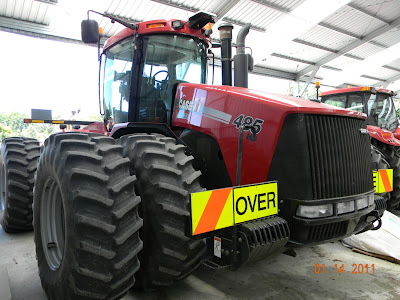The group had another fantastic farm visit at the David Ward Radfield farm, 1,000 acres on the south Island near Ashburton. The soils are medium to light.
David says that although soil is a fixed resource, how it is treated can greatly alter its characteristics, mainly by altering the structure of the soil and its water holding capacity.
Rainfall is 26 inches /year. The main way he alters the climatic effects are by irrigation and shelter.
According to David, the farm can only operate within the management ability of the owner, unless the owner recognizes a limitation and either brings in management , or advice and assistance from research, technical, and consultants, but even this is dependent on the ability of the owner to correctly interpret the results
Irrigation from thre bores with two 1,530 ft lateral irrigators, two Roto Rainers and two Briggs Linears. They raise 800 weaner red deer and 14,000 lambs. They mill wheat, feed wheat, feed barley, maize, processed peas, ryegrass, cocksfood, white clover, carrots, radish, beets, marrowfat peas (Asian market) and sweet corn.
David says he has no problem with organic, but they can’t feed the world; farmers must be open minded. He says we will always be able to feed the world based on technology. He believes in no-till farming. He buys equipment after first owner goes bust. He doesn’t have much money tied up in stuff. It’s your personal choice how you do your business. He likes the risks & rewards of growing premium crops. He is not a fan of over fertilization.
Rabbits and possums are still problems.
 |
| Farm Truck that can Dry Grain |
 |
| David Ward in Carrot Seed Field |
 |
| Grant McFadden (left) Guide & David Ward, right |
 |
| Group at David Ward Farm Tour |
 |
| Lateral Irrigator |
 |
| Loading Grain |
 |
| Marrowfat Peas |
 |
| Roto Rainer |
 |
| Group listening to South Dakota's Secretary of Ag, Walt Bones |



















































